Vitreous and Retinal Treatment
What is Vitreoretinal Surgeon?
A specialized branch of ophthalmology that focuses on the medical and surgical treatment of retina, vitreous (jelly like inside eyeball) and macula ( eye central vision)
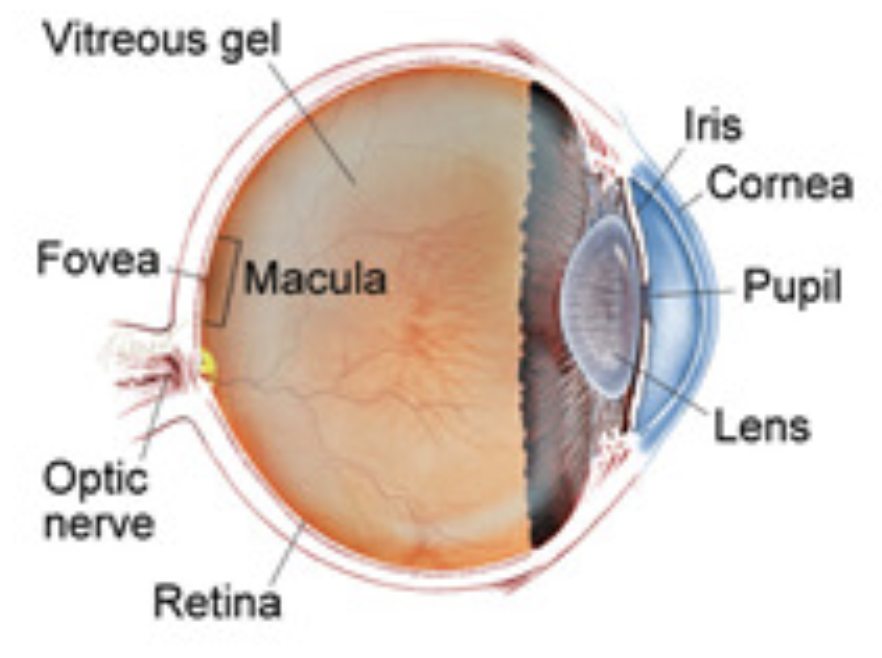
This field addresses a wide range of issues behind the eyes, including Age-related macular degeneration (AMD), Retinal detachment, Epiretinal membrane, Macular holes, infection, Intraocular foreign body and trauma.
Vitreoretinal surgeons are trained to perform a procedure of laser therapy, cryotherapy, retinal detachment surgery, and vitrectomy (removal of the vitreous)
Which Condition Can We Treat?
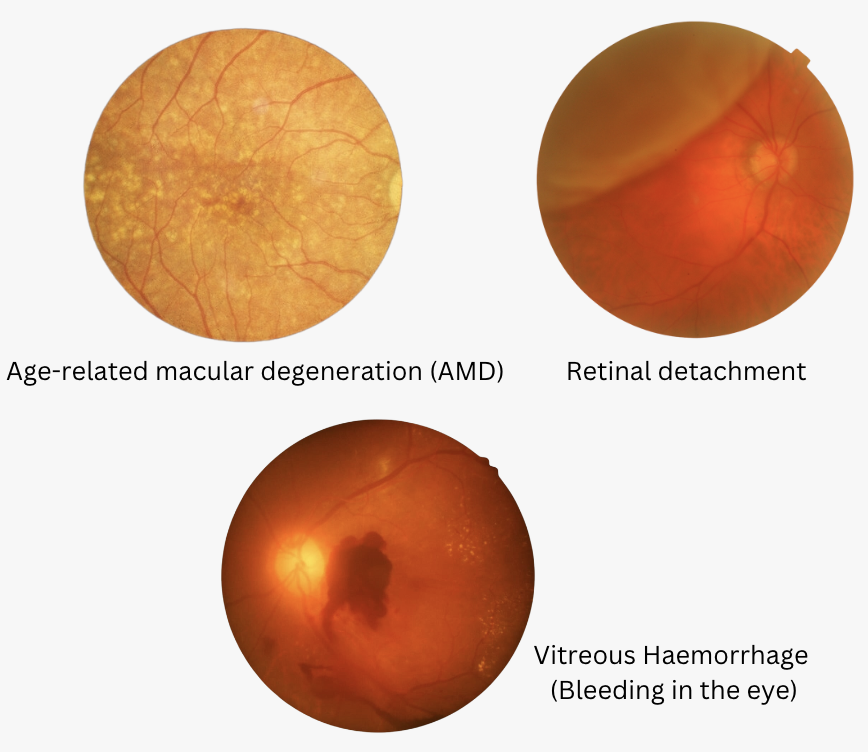
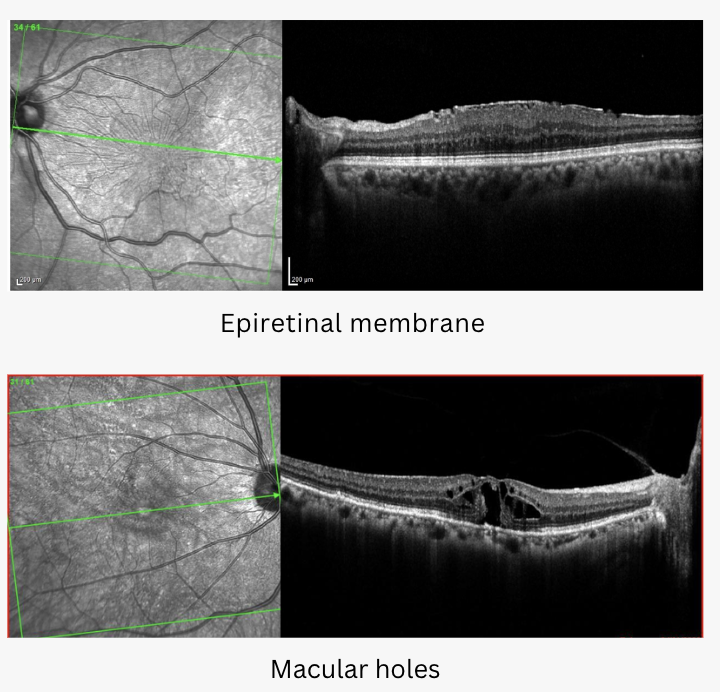
What is Retinal Detachment?
Retinal detachment is a serious eye condition in which the retina, a layer of tissue at the back of the eye, pulls away from its normal position. This can lead to a sudden and severe loss of vision and requires immediate medical attention.

What are the Treatment for Retinal Detachment?
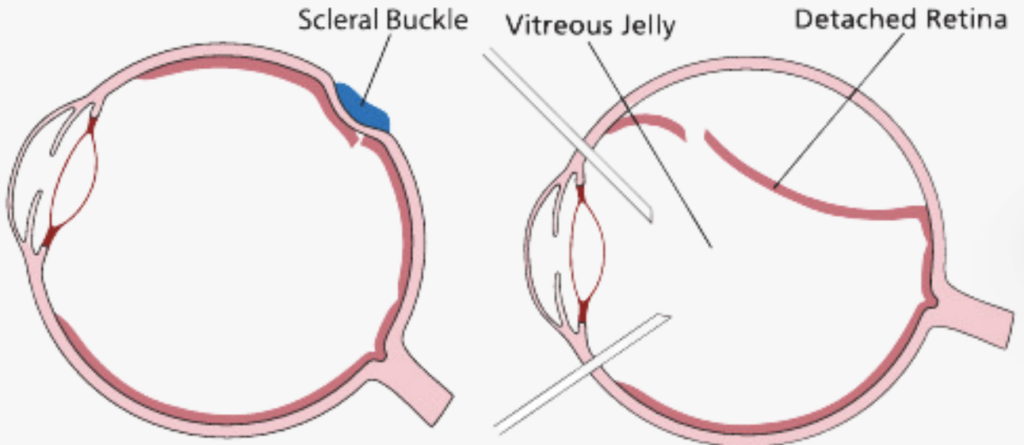
- Performed to remove the vitreous gel from the eye with 3 tiny incisions.
- Laser burns are applied to seal retinal holes.
- Special gas or silicone oil is inserted to prevent re-detachment.
- Modern vitrectomy is suture-less, allowing for faster recovery and less post-op pain.
- Wide-angled viewing systems enhance visualization during surgery.
- A piece of silicone (scleral buckle) is sutured to the outside of the eye.
- The retinal hole is treated with cryotherapy (freezing treatment).
- The buckle presses the eye inward to help close the retinal hole.
- The buckle usually isn’t removed and it’s not visible after surgery.
- This procedure, known as "Cryo-buckle," can be combined with vitrectomy for complex cases.
- Suitable for a few selected cases
- It combines cryotherapy (freezing the retinal tear) with injection of a gas bubble, without removal of the vitreous or use of a scleral buckle.
What to Expect After Surgery?
- Patients may need to maintain a face-down posture to allow the gas bubble to contact the retina.
- The gas bubble typically dissolves on its own within a month.
- Avoid air travel if gas is present in the eye, as altitude can increase pressure.
- Silicone oil, if used, requires removal in a second operation after 6 months.
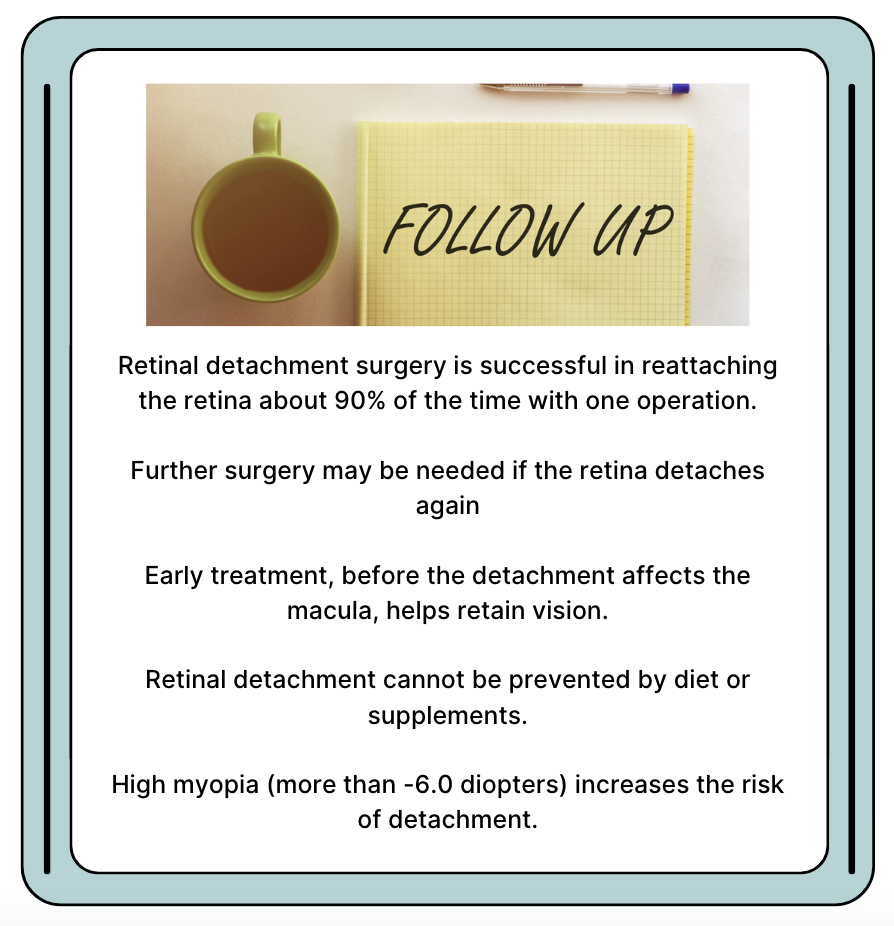
Take the first step towards better eye health today!
Book your appointment now !
Your Trusted Eye Specialist Centre.
Your vision is our priority
our expert team is ready to help you see the world clearly!

